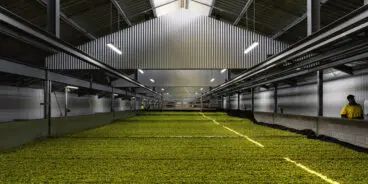
Insights: Craft challenges and need for renewal
Insights looks at news stories, research and data from around the beer world that have caught our editor’s eye and have relevance to what is happening in our own industry and are presented with context and analysis….
The challenges facing the craft brewing industry have reached the mainstream media around the world, with even Forbes magazine regularly covering the business aspects of the industry through the lens of respected brewing journalist Don Tse.
While the lessons in one jurisdiction must be considered through the prism of factors peculiar to that region, a couple of recent articles have revealed some interesting insights of relevance to Australian brewers.
Earlier this month Tse looked at the doldrums that have beset the brewing industry in a column titled “Once-Booming Craft Beer Market Stalled At 0% Growth In 2022, Brewers Association Reports. Now What?”
It notes that “At one time, the Brewers Association had a stated goal of craft beer representing 20% of the overall beer industry. But with the announcement of no growth in 2022, that percentage may have peaked at its current 13% by volume, though it does represent 25% of the beer market by dollars, since craft beer is generally more expensive than the beer sold by the large multi-national brewers.”
This one paragraph not only represents a significant change in aspirations for the US industry but it also contains a significant alarm for all craft brewers who have long celebrated their dollar share of the market.
The growth target, which officially came to a screeching halt at this year’s Craft Brewers Conference, has been a major selling point for those with a vested interest in talking up the investment prospects that breweries represent, long after it was demonstrably unlikely.
But, with volume growth arrested, the other much-celebrated fact about craft – that it over-indexes massively in value of sales – may come to be an anchor around the category’s neck rather than its traditional cause for celebration.
Post-covid, and especially as Australia enters worrying economic conditions, the drinks industry has seen a change in consumer drinking habits. Consumers that turned to trusted brands during COVID
CGA by NeilsenIQ recently presented data to a drinks industry conference that showed worrying declines in beer drinkers choosing craft and imported beers, despite a corresponding increase in domestic beer.
With craft beer selling at a substantial premium over mainstream beer, an economy-driven consumer shift toward price consciousness will hurt craft, especially as craft brewers increasingly offer a similar, but much more expensive, product.
The failure of the independent craft industry to use its time in the sun to build confidence in its brand and enunciate a clear value proposition for its premium price creates an enormous challenge now that the market focus has switched to other beverages.
Craft beer with a side of grunge no longer enough
Another recent colum with themes familiar to Brews News podcast listeners came under the headline, “Why You’ll Soon Get Better Food, Service And Entertainment At Your Favorite Brewery.”
In it Tse discusses the changing consumer preferences that should see the layout and offering at US craft breweries change and, no doubt, here as well.
One particularly powerful insight is:
“It used to be that brewery taprooms were sparsely decorated — sometimes even sparsely furnished — rooms with concrete floors and brewing equipment scattered about. They often looked like afterthoughts because they were. Their purpose was to provide a place to taste the brewery’s beer, and not much more.”
This echoes the analysis by Brewers Association economist Bart Watson at the Craft Brewers Conference who highlighted the challenges faced by breweries that opened prior to 2018 with that older aesthetic and mindset.
His data showed that taprooms and brewpubs that opened in 2018 showed growth of 20 per cent, he explained in May, while those opening before 2018 grew at just 2 per cent.
“This highlights the need to reinvent,” Watson said.
“Hospitality business concepts, which most of these businesses are, typically have a shelf life.
“And this gap between before and after 2018 breweries shows that no one should be resting on their laurels.
“Even in this category, which is clearly the bright spot for craft, breweries are going to have to work to reinvent to stay competitive when more breweries are still coming.”
Aspiring brewery owners inspired by the brewpub model of the late 2010s – repurposed industrial unit with an industrial aesthetic in an industrial area and bare-bones hospitality offer – planning to open with that offering may find that the market has moved on before they open.



